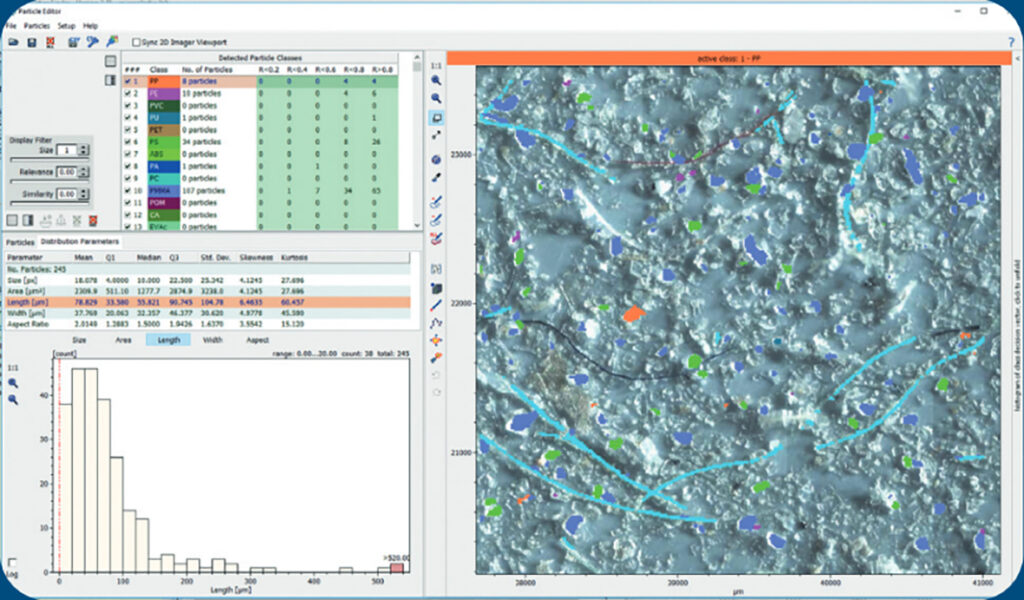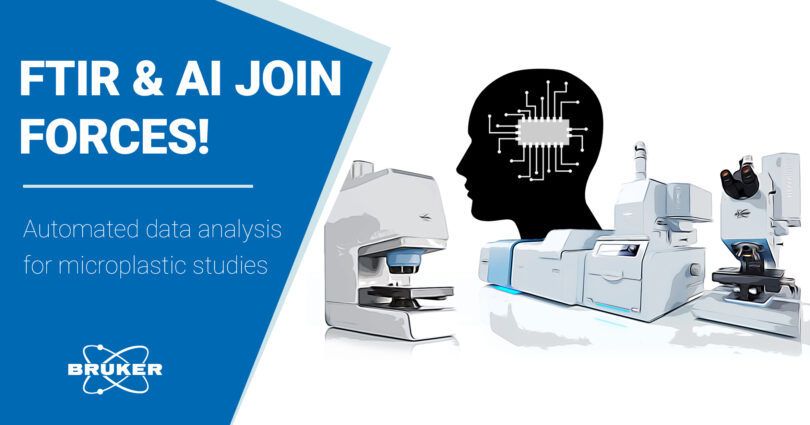FTIR and AI join forces! With the help of machine learning FTIR becomes an even stronger ally in microplastics research.
Microplastics – here there and everywhere
They are everywhere – in the air, in our water and in the soil. Microplastics even occur in remote regions such as the Arctic or the Mariana Trench. While studies of their effect on the ecosystem and human health are alarming, the exact impact remains unclear.

Regardless of what the exact effects are, they are certainly related to the exposure level as well as the polymer type, shape, and size. Thus, it is crucial to learn more about material properties and what could be better suited for this than FTIR?!
FTIR – A good ally in microplastics analysis
When it comes to microplastics analysis, FTIR microscopy is the analytical method of choice. It can identify particles based on characteristic vibrational bands and allows chemical images to be created by recording several thousand spectra in short time by using Focal Plane Detectors (FPA). Thus, everything can be captured in a single time-saving measurement. With Brukers HYPERION II and LUMOS II this is an easy task.

But the analytical technique is not the only important factor to consider for a fast and reliable microplastics analysis and optimal evaluation is key.
The most common current approach is the use of spectral libraries to characterize microplastics. There are however limitations to this approach.
In order to get reliable data, the number of spectra within the library must greatly increase. However, a bigger library also means a slower analysis.
But in order to make microplastic analysis scalable, data analysis must become faster and, above all, more intelligent. If it comes down to time, using huge libraries is thus simply not practical.
This is where our partner Purency comes into play. They utilize machine learning to automate tasks that otherwise take too much time with the traditional approach.
Microplastics Finder
Purency developed the easy-to-use imaging software Microplastics Finder (MPF). It is a model-based machine learning approach.
But what does that mean?
Machine learning models are mathematical models that a machine learning algorithm built by using a prepared set of training data. To be more precise, the model is trained to determine which pixel of an FT-IR image is a polymer and which one is not. They also instruct it on how to differentiate between various polymer types.

How does this work in detail?
Each hyperspectral picture pixel is examined by the Microplastics Finder, which categorizes them into predetermined polymer classes. The machine learning system performs this decision-making process by using sections of the spectra to discriminate between the various types of polymers.
After processing the full image, nearby pixels that belong to the same polymer class are labeled as particles. Additionally, a logically organized results table visualizes details like the kind of polymer and the size of each particle. (see screenshot above)
With this approach the model can differentiate between more than 20 distinct polymer types, which accounts for 98% of the plastics now manufactured.
Thank you machine learning!
Learn more about microplastics:
https://www.bruker.com/microplastics
Learn more about purency:
https://www.purency.ai/
More on our blog about microplastics:
https://www.opticsblog.bruker.com/raman-microscopy-to-the-rescue/








